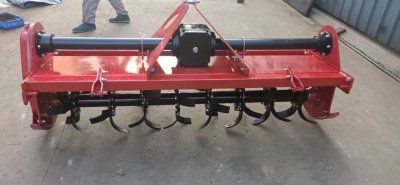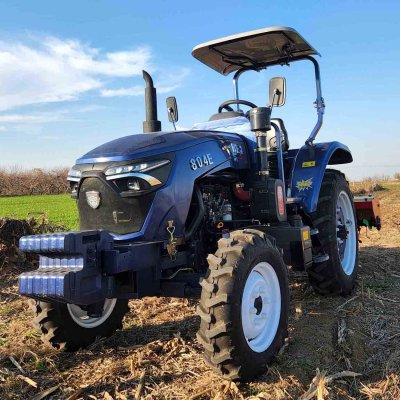A Comprehensive Guide to Buying a tractor: How to choose the best farm machine for you
Tractors, as indispensable power machinery in modern agriculture, are widely used in various operations such as tillage, sowing, fertilizing, harvesting, and transportation. Choosing a suitable tractor can not only improve agricultural production efficiency but also reduce operating costs. However, faced with a wide variety of tractors with different functions on the market, how can one make a wise purchasing decision?
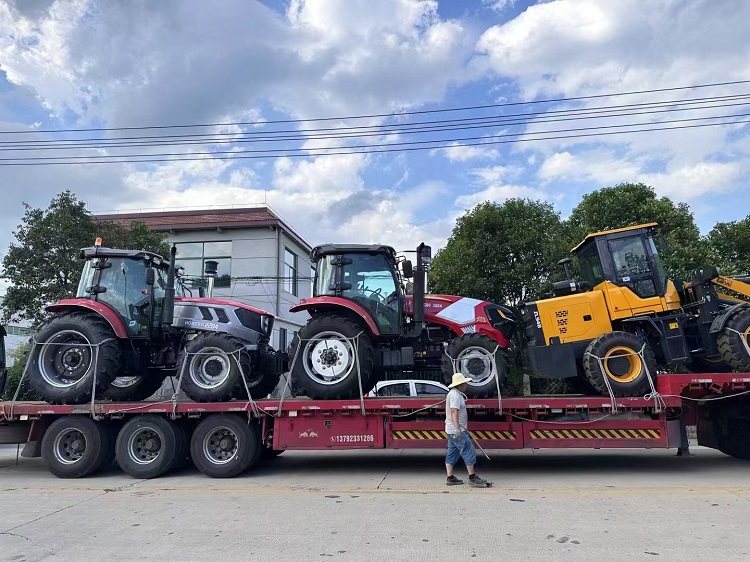
I. Clarify Your Needs: Determine the Tractor's Purpose
Before purchasing a tractor, it is essential to clarify its main purpose first. Different operational requirements have different demands for the tractor's power, functions, attachments, etc. Here are several common uses of tractors:
Tillage: Used for operations like plowing, rotary tilling, and harrowing. It usually requires high traction and a low driving speed.
Sowing and Fertilizing: Demands precise speed control and stable power output from the tractor.
Harvesting: Used to tow large agricultural machinery such as combine harvesters, requiring the tractor to have high power and good maneuverability.
Transportation: Used to tow trailers or transport agricultural products, requiring the tractor to have a relatively high driving speed and a good suspension system.
Multi - functional Operations: If the tractor needs to be used for multiple operations, it is recommended to choose a multi - functional tractor that can be equipped with different attachments as needed.
1.1 Operation Scale and Frequency
The operation scale and frequency are also important factors to consider when choosing a tractor. Small - scale farms or family farms may only need a small - sized tractor, while large - scale commercial farms require multiple large - sized tractors or models with higher power. In addition, farms with high - frequency operations should choose tractors with strong durability and low maintenance costs.
II. Power Selection: Determine the Horsepower According to Operational Requirements
The power of a tractor is usually expressed in horsepower (HP). The greater the horsepower, the stronger the tractor's traction and operational capabilities. Choosing the appropriate horsepower is the key to ensuring that the tractor can complete operations efficiently.
Small - sized Tractors (20 - 50 HP)
Small - sized tractors are suitable for small - scale farms, orchards, greenhouses, and other working environments. They are usually small in size and flexible in operation, making them suitable for working in narrow spaces. The main uses of small - sized tractors include:
Light - duty tillage (such as rotary tilling and plowing)
Sowing and fertilizing
Lawn mowing
Small - scale transportation tasks
Medium - sized Tractors (50 - 100 HP)
Medium - sized tractors are suitable for medium - scale farms and a variety of operational needs. They have strong traction and versatility, enabling them to complete more complex tasks. The main uses of medium - sized tractors include:
Medium - scale tillage and sowing
Harvesting operations
Medium - scale transportation tasks
Using various agricultural machinery (such as mowers, loaders, etc.)
Large - sized Tractors (Over 100 HP)
Large - sized tractors are suitable for large - scale commercial farms and heavy - duty operations. They have powerful traction and high operational efficiency, enabling them to quickly complete large - area tillage, sowing, harvesting, and other tasks. The main uses of large - sized tractors include:
Large - scale tillage and sowing
Towing combine harvesters
Heavy - duty transportation tasks
Using large - sized agricultural machinery (such as subsoilers, large - sized loaders, etc.)
Precautions for Power Selection
Type of Operation: Different operations have different power requirements. For example, plowing requires high traction, while sowing requires stable power output.
Terrain Conditions: When operating in hilly or mountainous terrains, higher horsepower may be needed to overcome terrain resistance.
Future Expansion: If there are plans to expand the operation scale or add agricultural machinery in the future, it is recommended to choose a tractor with slightly higher power to meet future needs.
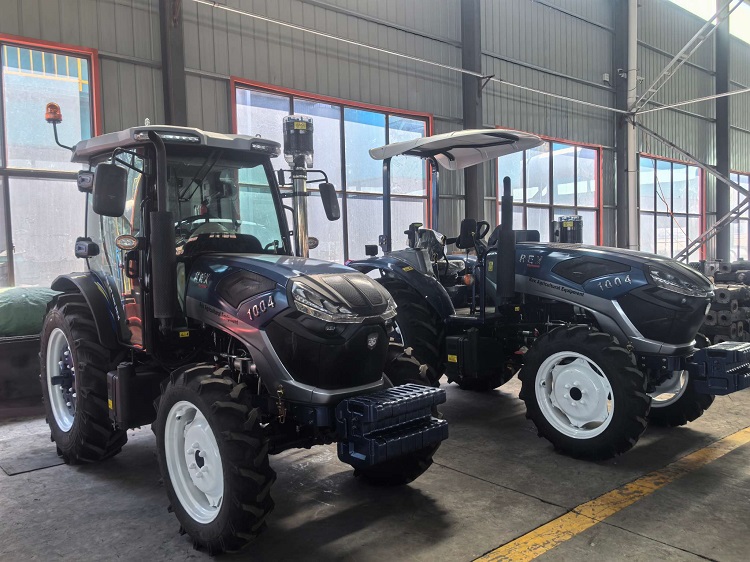
III. Drive Type: Two - Wheel Drive vs. Four - Wheel Drive
The drive types of tractors are mainly divided into two - wheel drive (2WD) and four - wheel drive (4WD). Different drive types are suitable for different working environments and requirements.
Two - Wheel Drive (2WD)
Two - wheel drive tractors are usually lower in price and relatively lower in maintenance costs. They are suitable for flat terrains and light - duty operations, such as lawn mowing and small - scale transportation. However, two - wheel drive tractors are prone to slipping on wet or soft ground, and their traction is relatively weak.
Four - Wheel Drive (4WD)
Four - wheel drive tractors have stronger traction and better passability, making them suitable for complex terrains and heavy - duty operations. They perform better on wet, soft, or uneven ground and can provide more stable power output. Four - wheel drive tractors are usually higher in price and higher in maintenance costs. But for large - scale farms or operations in complex terrains, four - wheel drive is a better choice.
Precautions for Choosing the Drive Type
Terrain Conditions: If the working terrain is complex or often encounters wet and soft ground, it is recommended to choose a four - wheel drive tractor.
Type of Operation: Heavy - duty operations (such as plowing and harvesting) usually require a four - wheel drive tractor.
Budget: Four - wheel drive tractors are more expensive, so a trade - off needs to be made according to the budget.
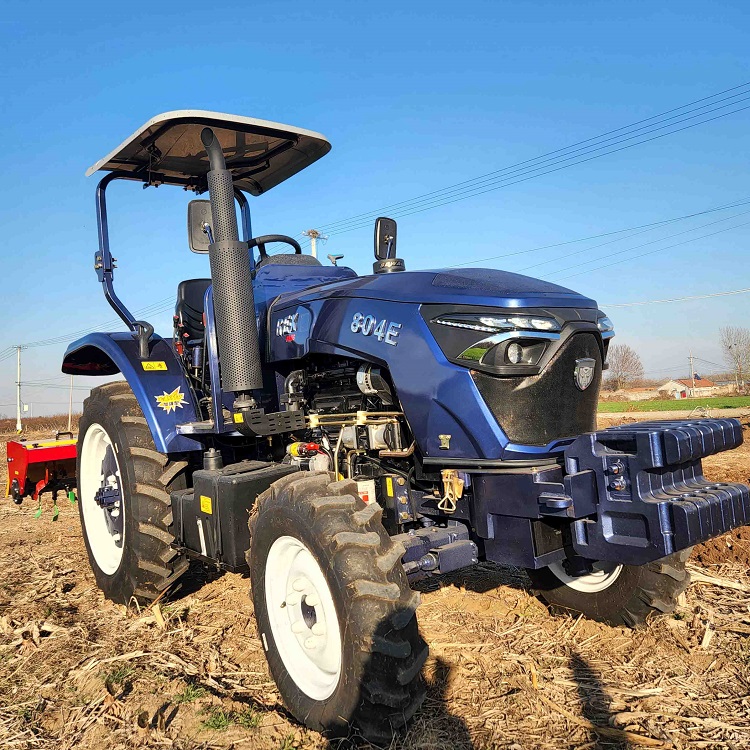
IV. Transmission Type: Manual vs. Automatic vs. Continuously Variable Transmission (CVT)
The transmission type of a tractor directly affects its ease of operation and operational efficiency. Common transmission types include manual transmissions, automatic transmissions, and continuously variable transmissions (CVT).
Manual Transmission
Manual transmissions require the driver to shift gears manually. The operation is relatively complex, but the price is lower, and the maintenance cost is also lower. Tractors with manual transmissions are suitable for experienced drivers who can adjust the gears flexibly according to operational requirements.
Automatic Transmission
Automatic transmissions are easy to operate and are suitable for novice drivers or working environments that require frequent gear - shifting. Tractors with automatic transmissions can adjust the gears automatically according to the load, providing a smoother power output. However, tractors with automatic transmissions are more expensive, and the maintenance cost is also higher.
Continuously Variable Transmission (CVT)
Continuously variable transmission (CVT) can provide the best power output at any speed. It is easy to operate and highly efficient. Tractors with CVT are suitable for a variety of working environments. They can adjust the transmission ratio automatically according to the load, providing the best traction and fuel efficiency. However, tractors with CVT are more expensive, and the maintenance cost is also higher.
Precautions for Choosing the Transmission Type
Operating Experience: If the driver is experienced, a manual transmission may be a cost - effective choice; if the driver is a novice, an automatic transmission or CVT may be more suitable.
Operational Requirements: Working environments that require frequent gear - shifting (such as sowing and fertilizing) are suitable for automatic transmissions or CVT.
Budget: Tractors with automatic transmissions and CVT are more expensive, so a trade - off needs to be made according to the budget.
V. Attachments and Versatility
The versatility of a tractor depends on the types of attachments it can use. Different attachments can expand the functions of the tractor, making it suitable for various operations. Common tractor attachments include:
Loader: Used for loading and transporting materials such as soil, fertilizer, and feed.
Mower: Used for mowing lawns or harvesting forage.
Plow: Used for plowing the soil.
Seeder: Used for precise sowing.
Fertilizer Spreader: Used for spreading fertilizers evenly.
Trailer: Used for transporting agricultural products or other materials.
5.1 Precautions for Attachment Selection
Compatibility: Ensure that the selected attachments are compatible with the tractor's model and power.
Operational Requirements: Choose suitable attachments according to operational requirements to avoid unnecessary investment.
Future Expansion: If there are plans to expand operations in the future, it is recommended to choose a tractor that can be compatible with multiple attachments.
VI. Brand and After - sales Service
Choosing a tractor from a well - known brand usually ensures higher product quality and more reliable after - sales service. Tractors from well - known brands usually have the following advantages:
Reliable Quality: Tractors from well - known brands usually undergo strict quality control and have strong durability.
Complete After - sales Service: Well - known brands usually provide comprehensive after - sales services, including maintenance, repair, and parts supply.
Technical Support: Well - known brands usually provide professional technical support to help users solve problems during use.
6.1 Precautions for Brand Selection
Market Reputation: Choose brands with a good market reputation to avoid purchasing products with unreliable quality.
After - sales Service Network: Ensure that the selected brand has a complete after - sales service network in your area to obtain maintenance and repair services in a timely manner.
Parts Supply: Choose brands with sufficient parts supply to avoid situations where the tractor cannot be used normally due to a shortage of parts.
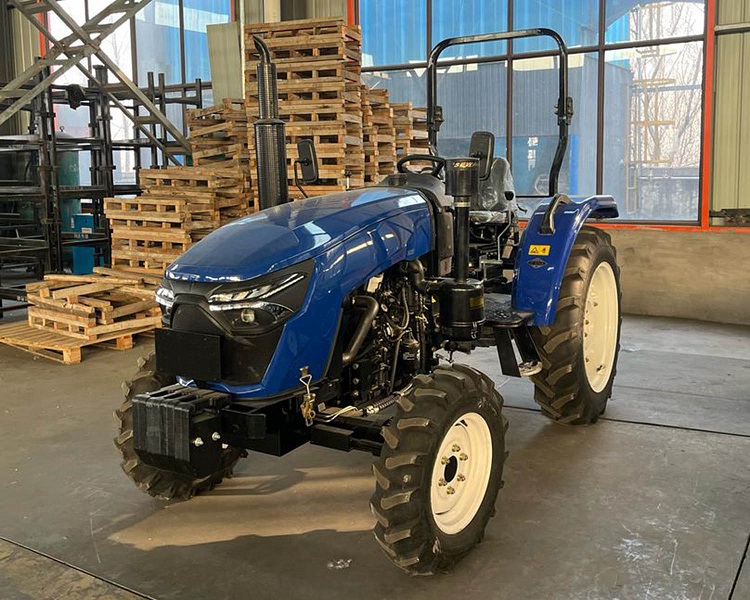
VII. Budget and Cost Considerations
Purchasing a tractor is an important investment. In addition to the purchase price, the following costs also need to be considered:
Maintenance Costs: The daily maintenance and servicing expenses of the tractor.
Fuel Costs: The fuel consumption of the tractor directly affects operating costs.
Attachment Costs: If you need to purchase attachments, consider the prices of the attachments.
Insurance Costs: The insurance costs of the tractor are also factors to be considered.
7.1 Precautions for Budget Planning
Total Cost of Ownership: In addition to the purchase price, consider costs such as maintenance, fuel, and attachments, and calculate the total cost of ownership.
Long - term Return on Investment: Choosing tractors with strong durability and low maintenance costs can reduce long - term operating costs and improve the return on investment.
Financing Options: If the budget is limited, financing or leasing options can be considered to spread the purchase cost.
VIII. Test Drive and On - site Inspection
Before making the final purchase decision, it is recommended to conduct a test drive and on - site inspection. A test drive can help you understand the tractor's operational performance, comfort, and maneuverability. An on - site inspection can help you understand the service quality and after - sales support of the dealer.
Precautions for Test Drive
Operational Performance: Pay attention to the tractor's acceleration, braking, and steering performance during the test drive.
Comfort: When working for long periods, the comfort of the tractor is very important. Pay attention to the seat, suspension system, etc. during the test drive.
Noise and Vibration: The noise and vibration levels of the tractor directly affect the driver's fatigue. Pay attention to these factors during the test drive.
Precautions for On - site Inspection
Dealer Reputation: Choose a dealer with a good reputation to ensure that you purchase a genuine tractor.
After - sales Service: Understand the dealer's after - sales service policy to ensure that you can obtain maintenance and repair services in a timely manner.
Inventory and Parts: Inspect the dealer's inventory and parts supply situation to ensure that you can obtain the required parts in a timely manner.
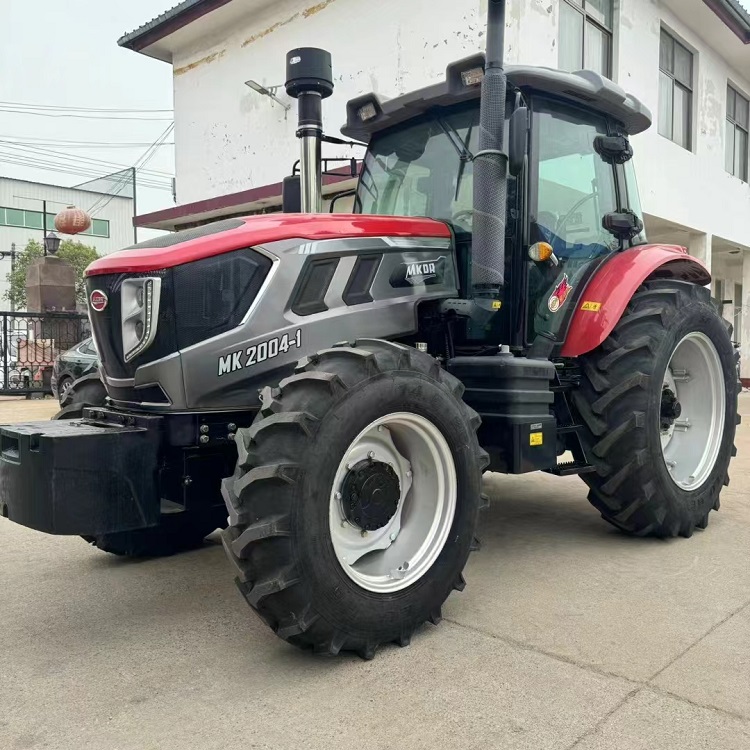
IX. Summary
Purchasing a tractor is an important investment that requires comprehensive consideration of multiple factors such as operational requirements, power selection, drive type, transmission type, attachment compatibility, brand reputation, budget, and cost. By clarifying your needs, making a reasonable choice, and conducting test drives and inspections, you can find the most suitable tractor for you, improve agricultural production efficiency, and reduce operating costs. I hope the suggestions in this article can help you make a wise purchasing decision and bring greater success to your agricultural production.

